a landscape at the service of nature, climate & human well-being
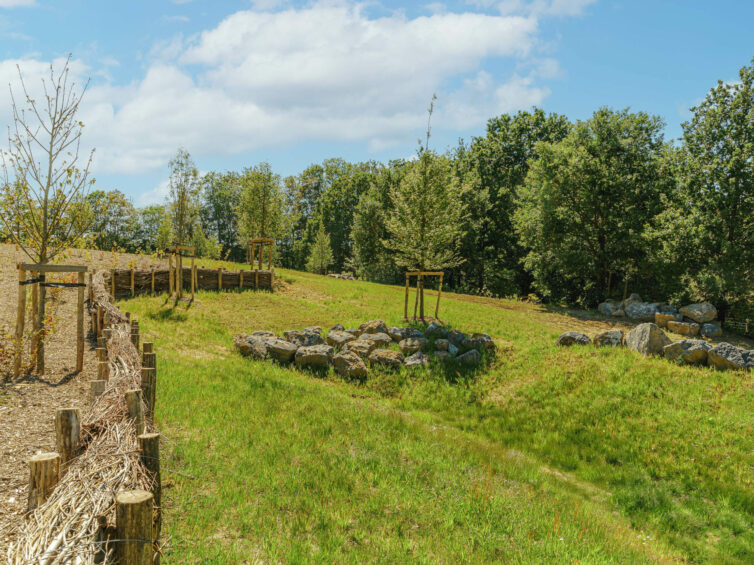
a landscape at the service of nature, climate & human well-being

The project concerns the landscaping of the land below the property, included in the Local Orientation Scheme (SOL) for the North Part of the ZACC “Birches/Louvranges” under the name “buffer green space area”.
The main objective of this project is to create a buffer zone for plants in front of properties located on the edge of the condominium without altering the natural qualities (fauna and flora) present in the site. This is a development exclusively of landscape nature, intended to improve the hydrometric character of the land and ecological north of the site.
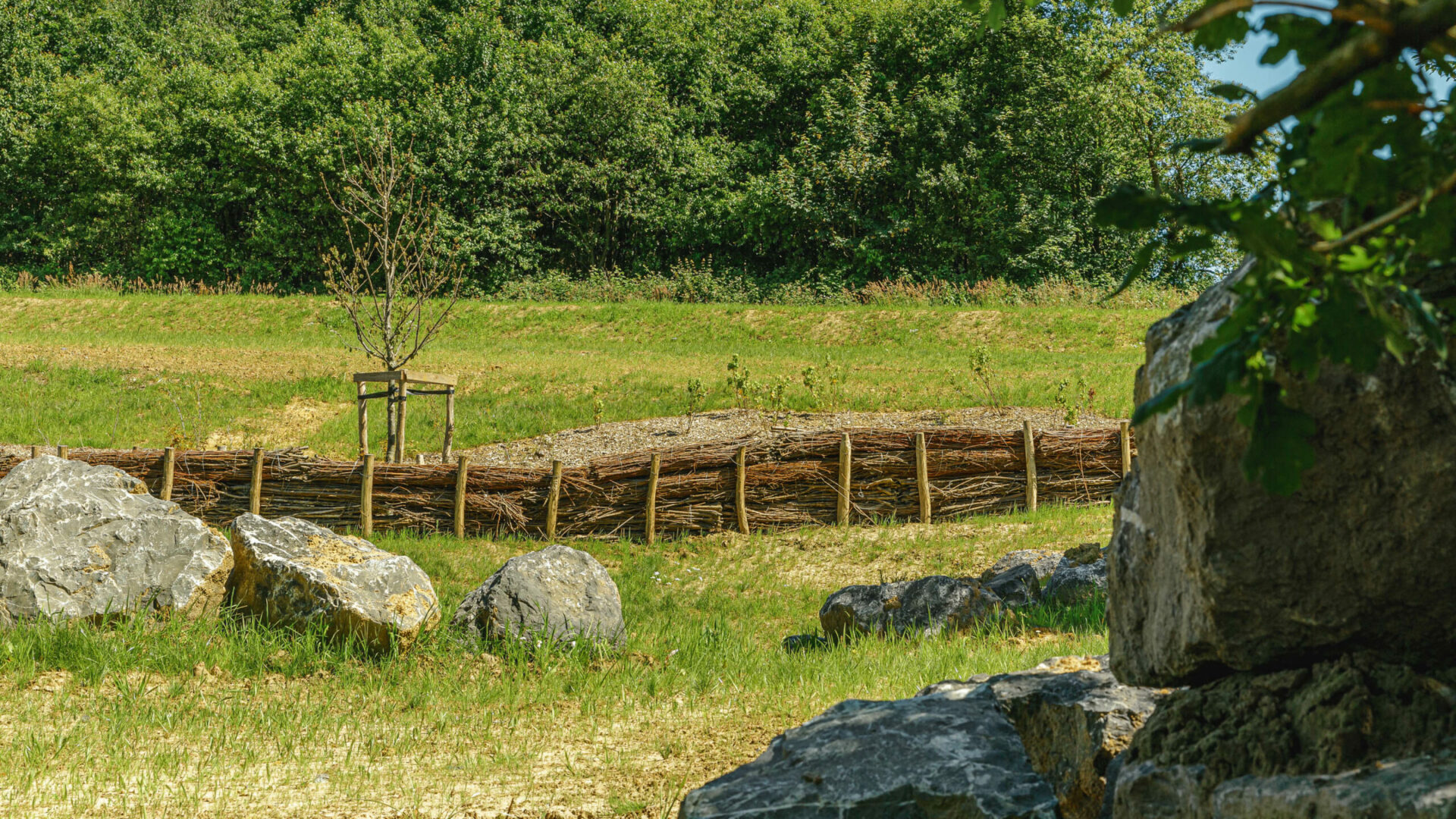
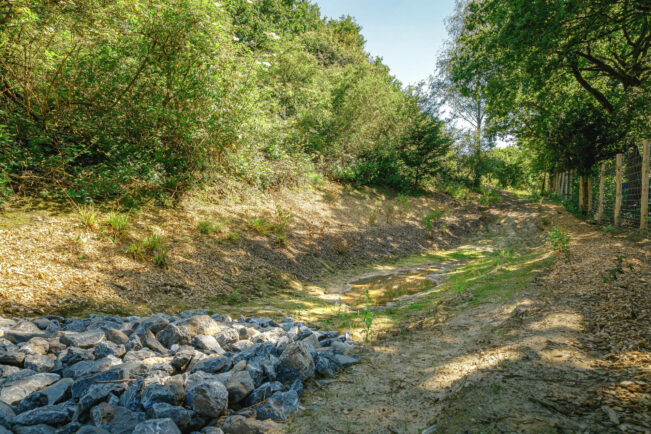
| program | preservation of the buffer zone of 7.285 m2 by strengthening the vegetation to limit views between riverains and the future hospital project of the CSPO with the creation of open water retention devices & infiltration through the ground |
| client | CSPO |
| address | Wavre • Louvrange Park • Chemin des Charrons |
| building type | live |
| status | completed |
| expertises | |
| offices | brussels |
| size | 22.000 sqm |
| team | • client : CSPO • manufacturer: EECOCUR • landscape architect: assar architects |
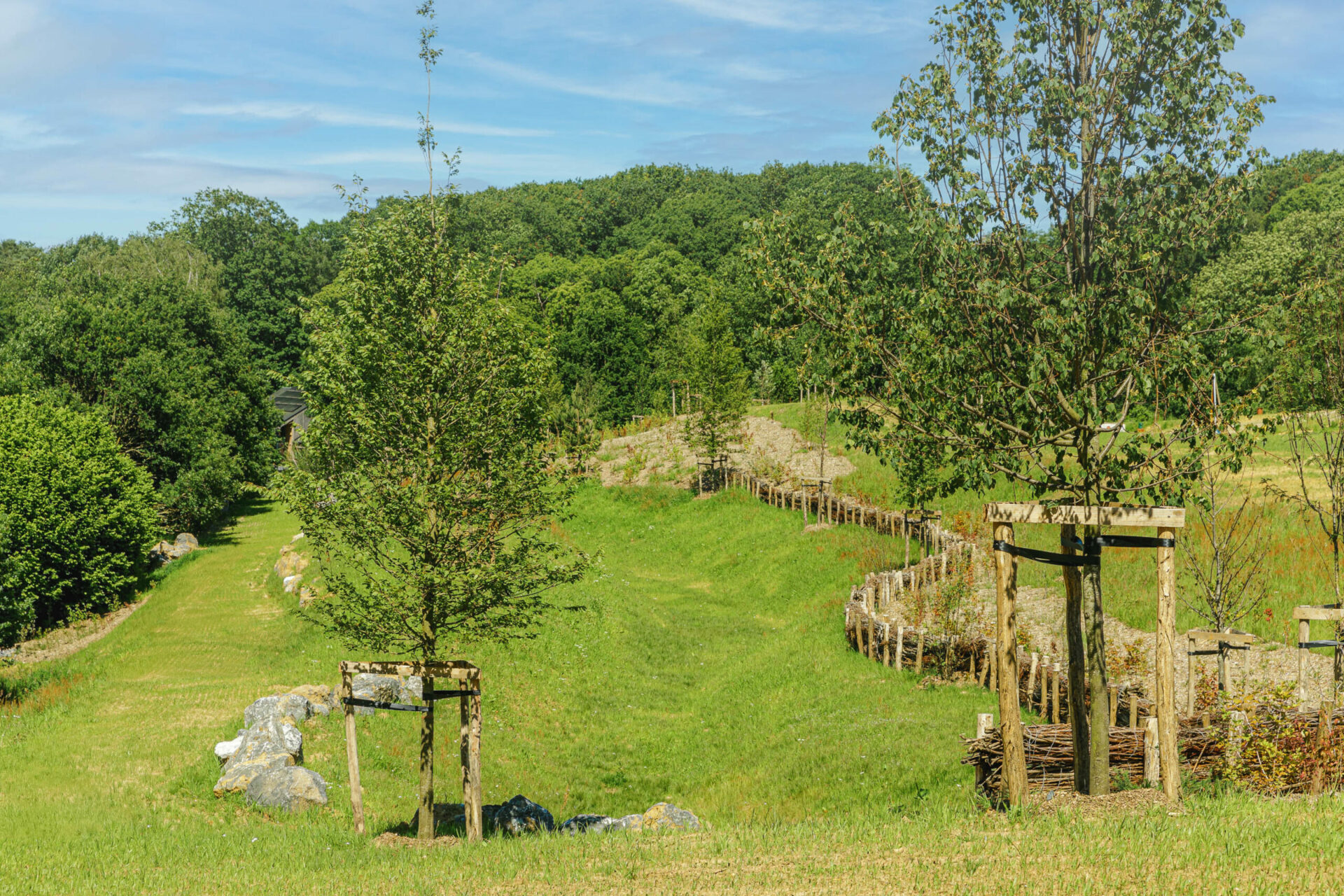
This “buffer zone” aims, in the long term, to mark a distance of retreat between the bottom of neighboring plots and the future new Saint-Pierre Clinic which will sit on top of the hill, near the N25. In addition to this objective, it also aims to participate in the management of the existing runoff water that, in case of heavy rainfall, flows to residential plots. The profiling of new merlons – whose land comes exclusively from local excavations without any input from outside – has created a flow that favors natural infiltration through existing sandy layers. The capacity calculation of these knots has been the subject of scientific studies by experts on the basis of statistical surveys.
The new development improves the situation with respect to runoff from the land upstream of the site. According to the evaluation criteria in Wallonia, over a period of 25 years with a duration of 3 hours, it is estimated that 633 m3 of runoff water flows into this catchment area (wood/field/meadow) including the talweg. A large longitudinal grass-covered valley takes up the main preferential flows, has a capacitive volume of 1.040.78 m 3. The upper noue has a capacitive volume of 350 m3.
The land movements were studied in such a way as to achieve an equilibrium in the excavations/embankments with a volume of about 8.450 m3. There is no intake or drainage. Previously the upper layer, called arable, had been rolled up 20 cm and stored before reuse.
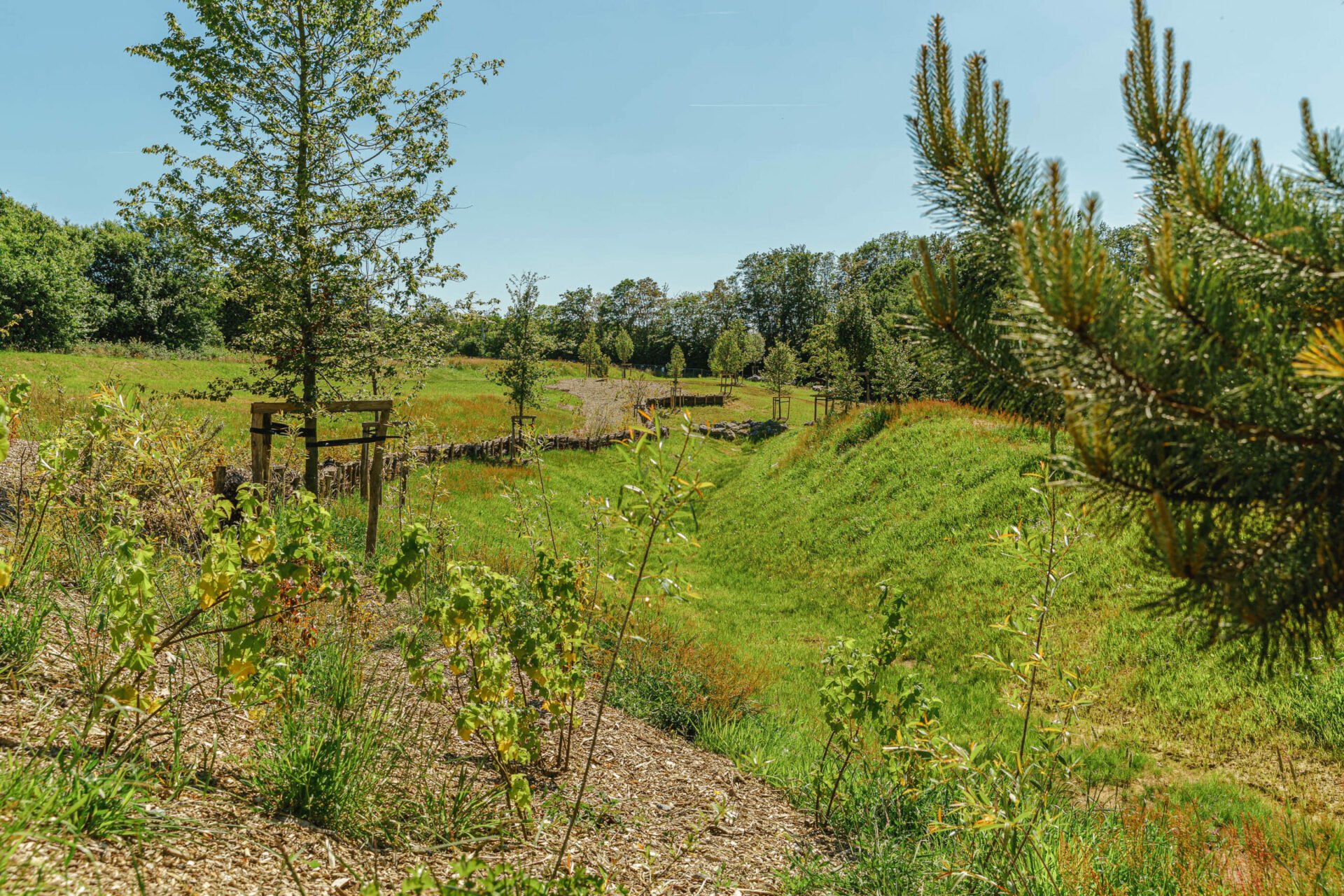
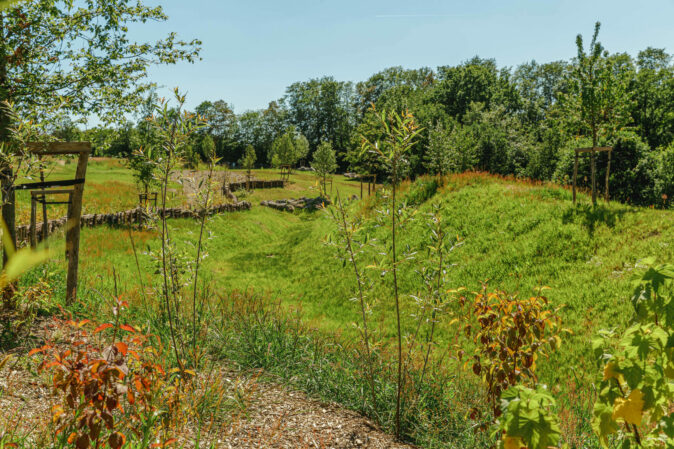
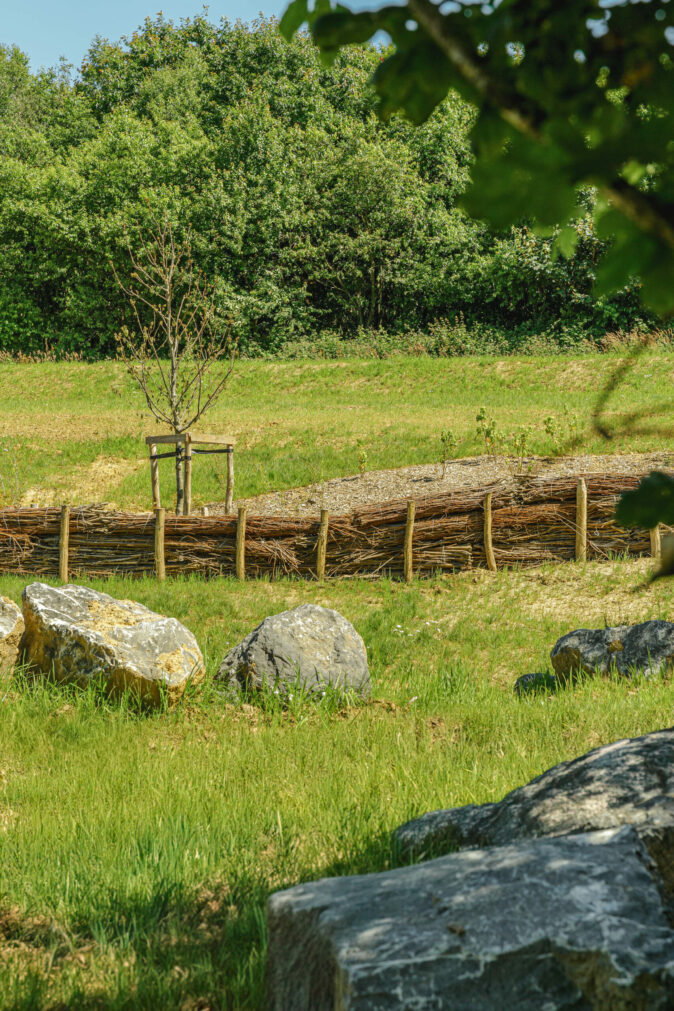
The development increases the biodiversity of the site and the creation of an ecological network in several points. The preservation of existing trees, new plantations of 88 tall stems with more than 10.000 plants taken up in planted beds, hedges bocagères, undergrowth vegetation, flowering meadows by native species, diversified, mellifère, Rock formations will provide habitat for wildlife (shelter/food). They thus bring a landscape dimension in connection with the neighborhood.
An agricultural/barge fence (large-mesh wooden wire fence) is installed in place of the old fence (concrete post and barbed wire). It ensures the passage of small wildlife. Two access devices are installed at the site boundary to limit access to light-duty motor vehicles. One at the level of the path of ploughs and the other at the end of the path coming from the way of Louvrange.
This project is intended to be sufficient for itself. Although it does not depend on the hospital project, it is nevertheless designed to participate fully in the future landscape and hydraulic study: plantations, green space areas, open water retention and/or infiltration devices, etc. The “Buffer Zone” represents both an improvement of the existing natural hydrometric condition and a safety zone vis-à-vis the area of future work. Between the dates of the 2 projects, the plantations will have developed and will constitute a relaxing plant network.
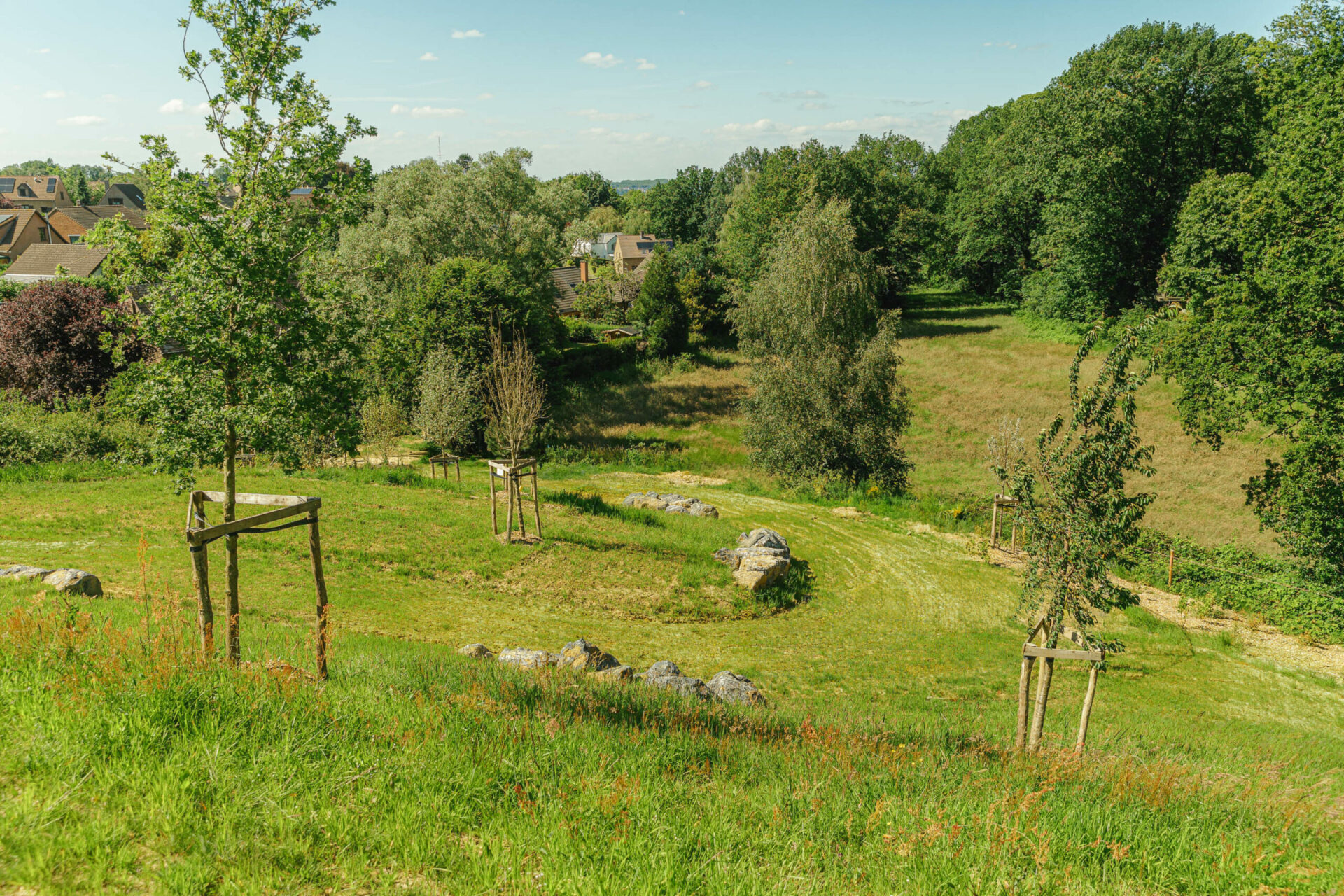
want to know more about assar or contribute to its continuous development